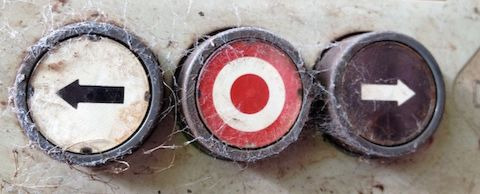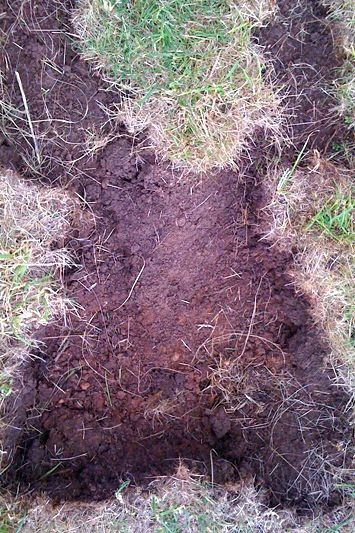future present past
Colwick Wood
Nottingham
October 6 2012
A walk to the hilltop overlooking the
Trent Valley
‘The Most Interesting Things Are Right Under Our Noses’ written by Emma Lloyd
How do you distinguish the everyday? It’s the direct
environment around you. It is the objects, the people, the
literal space and even your own ‘self’ that create the
everyday atmosphere in which we occupy and immerse
ourselves in daily. And it is these physical and
psychological notions of the ‘everyday’ that Andrew Brown
uses as implements to perform and reflect during his
artwalks.
In 2006, Brown founded Open City, in which
artwalks take place across varied terrain, in cities,
towns and rural areas and all involve a level of
'performance' and reflection by those taking part. This
might take the form of games, meditation, devising and
enacting ideas, mapping, collective discussion and
documentation. On the 6th October 2012, Brown organised a
rural walk in Colwick Woods, Nottingham. The instructions
on how to get to there and where to meet were rather vague
and ambiguous, especially for those who hadn’t visited
Colwick Woods previously: ‘Take a bus and meet by the
bus stop’. I wondered if the ambiguity was the
introduction to the walk, setting the tone, almost like a
riddle or a ripped pirate map – not giving too much
information away; yet then again, it could be nothing more
than a simple, yet blunt set of directions.
We eventually gathered outside the bus stop, our first
instruction was to remain silent during the walk unless
told otherwise. Brown expressed the importance of staying
calm and to reflect on our surroundings using all of our
senses – not just sight and hearing. In single file, we
walked to the entrance of the woods where we were told to
walk for 30seconds up the hill, only to slow right down
until we were barely, (but still continuously), moving. I
walked slowly up the hill and gradually prolonged my
movements until I focused on every part of my body – where
the movement was coming from, trying to control it,
sustaining it in a limbo of neither animate or inanimate
and suspending the logic of cause and effect. I believe
Brown want us to question our relationship with reality
through emphasis and amplification of that reality. He
does this with an almost ‘negative’ approach, through
interruption, rupture and deconstruction of our daily
expectations.
Although this was a group activity, I fixated and
reflected on my own individual experience at all times. I
had no awareness of where anyone else was and at stages, I
had forgotten that there was anyone else at all. The
performance felt very melancholic, almost deathly, as if I
was invading yet evading space. There was plenty of time
to think and plenty of time to be vacant as I dipped,
seemingly, in and out of consciousness. I lapsed in and
out of moments of deep introspection and formidable
frustration, as my mind prompted me of the seemingly
infinite and tedious journey still ahead.
At times, I wondered why I was putting myself through the
pain. I felt obligated to carry on, because not only did
it feel like a personal test; but I felt that I was now part
of the art. I couldn’t leave or give up – it would be
rude. My muscles shook and threatened to seize up as I
forced my body to play this outwardly serious take on a
childish game. Brown is transfixed with our acceptance and
understanding of the human condition, the inevitability of
fatigue and burning out. A grim humour underpins his
artwalks as Brown effectively explores and plays with this
notion.
I feel this singular performance of the artwalk was most
successful and memorable. It distinctly demonstrates a
liminal space that I believe Brown’s artwalks situate
within; always balanced on the boundary between two
contradictions: tedious and thrilling, subtle and
barefaced, temporal and spatial, conscious and
unconscious. Brown states he “flirt(s) with
collapse” and that the possibility of collapse
excites him. This is not surprising, as since the early
‘80s, Andrew Brown has been musically involved in free
collective improvisation. Positioning himself,
artistically, on the threshold and teetering on the edge
of collapse, Brown creates possibilities of the most
interesting things occurring. It is not that collapse will
happen, but the possibility, which makes
Brown’s work so intensely captivating.
Brown’s notion of defamiliarisation through
over-familiarisation is most evident, (also), in this
performance, as my responses were a timeline of the
familiar and unfamiliar. I noticed around me the
contrasting sounds and smells of the city and the woods;
thunderous trains passing, bustling people, and the toxic
smell of petroleum cars, juxtaposed with drops of rain
falling against and through the leaves, creaking groans
from thick branches of trees, and at some moments,
silence. However, what seemed for long periods, I could
not place or contextualise myself in the world, as if time
had stood still, during which I intensely engrossed myself
in staring, blankly, at one miniscule fragment of the
earth. The earth became an abstract form as I no longer
recognised or understood it for its purpose in the world;
I only encoded its shape, colour and configuration.
“Demystification is my agenda.” Brown’s
‘agenda’ in fact mystifies me. I believe there
is no clarification in defamiliarisation; however, is it through
defamiliarisation that we become clearer about the
physical and psychological roles we ‘perform’ within our
world, and therefore in turn, want to challenge them? Does
Brown believe our society is too familiar with our
surroundings and own physical and psychological place
within the world? It feels as if these performative
actions have a political nature to them, as if they are
some sort of protest against the fast-paced and assuming
world. Brown’s artwalks and interventions with everyday
life are intended to be witnessed live. The work is not in
designed to be encountered through the documentation. By
watching the documentation you get a very limited
experience – you have to immerse yourself physically and
therefore mentally. In this sense, the performances are
exclusive to both the people who choose to join and the
unsuspected ‘audience’. “I am not interested in
making art which is commercial or accessible for the
masses.” I feel this is a vital and essential
element to the politics within Brown’s work; it is only to
be seen/experienced by the ‘lucky’ few. This leads me to
question whom these performances are really for. Are they
for the participants to fully submerge themselves in
first-hand and therefore directly question the world in
which they live; or are they for the onlookers –
passers-by who witness and encounter this somewhat
‘strange’ and out-of-the-ordinary act to disrupt the
monotony in their everyday lives? Is Brown
merely using his participants to realise and communicate
his own political ‘agendas’ by suggesting and
tempting the volunteers to believe they will have their
own (false) ‘epiphany’ of self? Somehow, I don’t think so.
Though I do believe these ‘exclusive’ artwalks are as much
for the unanticipated audience that is the everyday world,
as they are for the participants.

